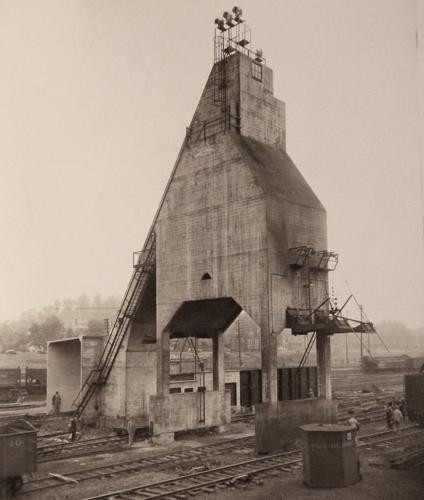
C&O Coaling Station
------------------------------------------------------------------------------------------------------

In 1938, Chesapeake & Ohio Railroad built a massive coal
loading station at its Huntington Locomotive Shop.
Courtesy of the C&O Historical Society
------------------------------------------------------------------------------------------------------
Coaling stations were an essential part of
railroading
during the era of the steam locomotive.
In railroading’s early years, coal was
shoveled by hand into locomotive
tenders. But as locomotives grew larger and so required increased
quantities of coal, the railroads began constructing coaling
stations, often referred to as “coal docks.”
As with steam locomotives themselves,
there were different
designs and sizes of coaling stations. The first ones were
constructed of wood. Later many were built of
steel and ultimately of reinforced concrete.
In almost all cases, coaling stations used
a gravity-fed method,
with one or more large storage bunkers for the coal elevated
on columns above the railway tracks, from which the
coal could be released to slide down a chute
into the waiting locomotive’s tender.
According to Thomas W. Dixon Jr., the
founder and chief
historian of the Chesapeake & Ohio Historical
Society, during the final decade of the C&O’s
steam operations it had 99 locations where
its locomotives could take on fuel.
In 1938, a massive coaling station was
built at the C&O’s Huntington
Locomotive Shop. The station was located just west of the shop’s
roundhouse, used to store steam locomotives. With the coming
of diesel locomotives, the old coaling stations and
roundhouses no longer served any purpose.
Ultimately those in Huntington
were demolished.
-----------------------------------------------------------
Note: This Article and picture appeared in the Herald-Dispatch Newspaper on Dec. 5, 2023.
-----------------------------------------------------------
[ Back ]